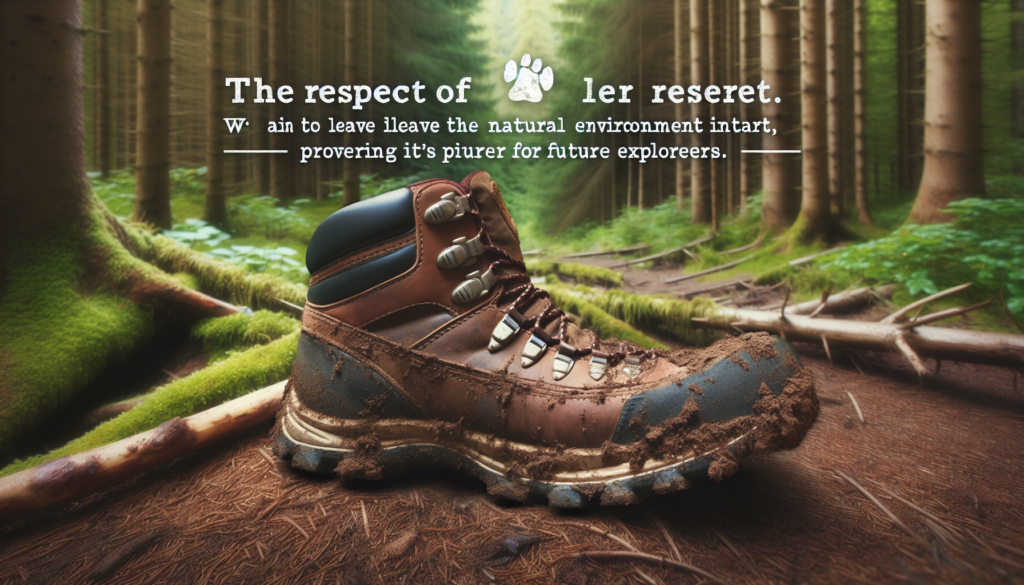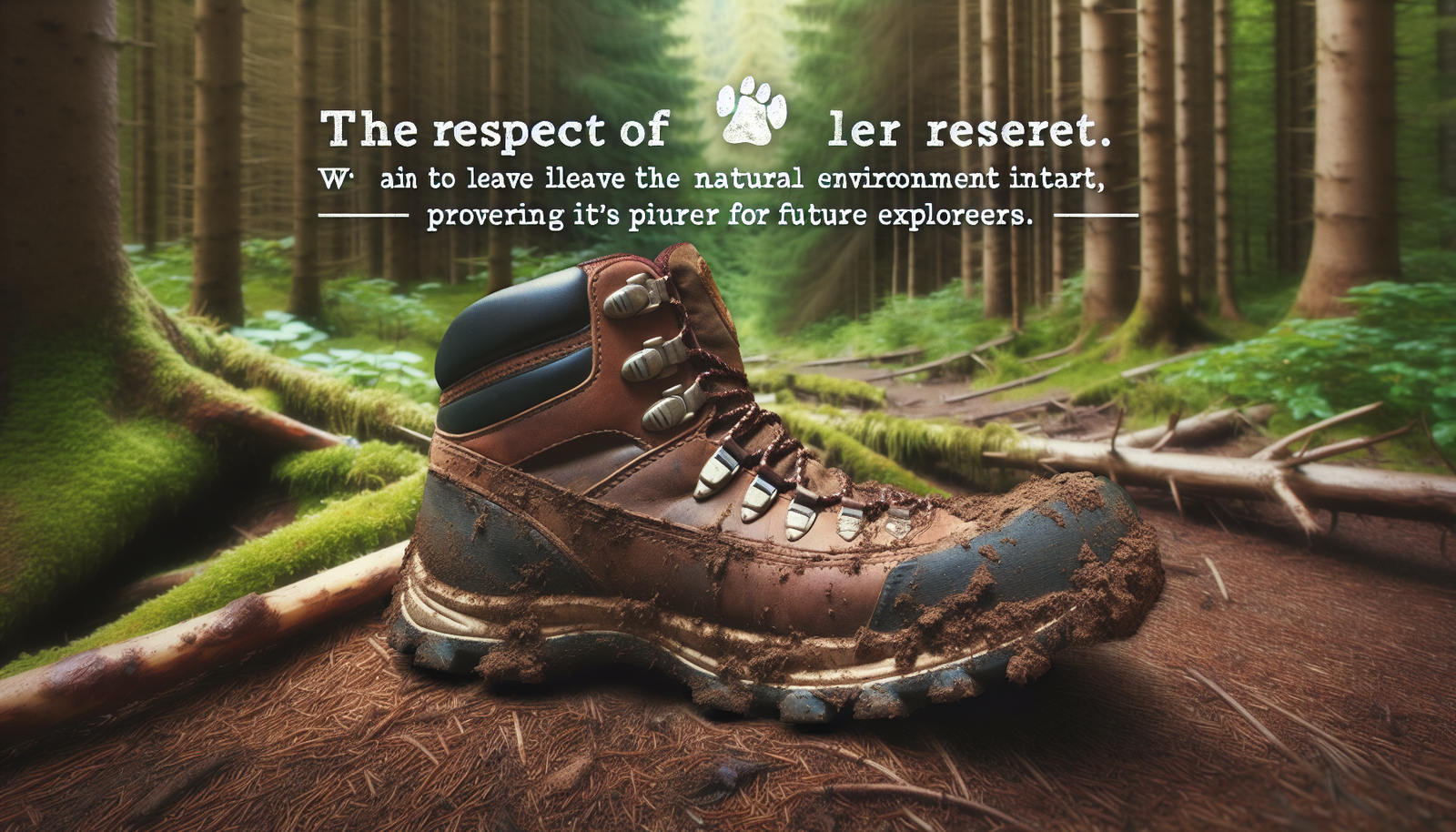Overlanding is an exhilarating way to explore the great outdoors, but it’s important to do so responsibly. That’s where the principles of Leave No Trace come in. By following these guidelines, you can minimize your impact on the environment and leave it as pristine as you found it. In this article, we’ll explore the essential rules of Leave No Trace specifically tailored for overlanding, ensuring that your adventure is not only thrilling but also sustainable. So gear up and let’s discover how you can harmoniously coexist with nature during your overlanding journeys!
1. What is Leave No Trace?
Leave No Trace is an ethical framework that promotes responsible outdoor practices to minimize the impact on the environment. It is a set of principles that guide outdoor enthusiasts, including overlanders, to enjoy nature while ensuring its preservation for future generations. Leave No Trace encourages individuals to leave the wilderness untouched, as if they were never there, by implementing practices such as properly disposing of waste, respecting wildlife, and camping in designated areas.
2. The Importance of Leave No Trace for Overlanding
Overlanding is a popular adventure activity that involves traveling in off-road vehicles to explore remote and often fragile environments. It provides individuals with unique opportunities to immerse themselves in nature and discover hidden gems far from the beaten path. However, overlanding also poses a significant risk to the environment if proper care is not taken. That’s where Leave No Trace comes in.
Practicing Leave No Trace principles while overlanding is crucial to minimize the impact of this activity on the environment. Overlanding often takes place in sensitive ecosystems, such as deserts, forests, and mountains, where even minor disturbances can have long-lasting consequences. By following Leave No Trace, overlanders can enjoy their adventures while ensuring the preservation of these pristine destinations for future generations to enjoy.

3. Principles of Leave No Trace for Overlanding
3.1 Plan Ahead and Prepare
Planning ahead is an essential step in minimizing your impact while overlanding. Before embarking on your journey, make sure to research the area you’ll be exploring, familiarize yourself with any regulations or permits required, and understand the local ecology and cultural significance. By planning ahead, you can avoid potential conflicts, make informed decisions, and ensure a more fulfilling and environmentally responsible overlanding experience.
3.2 Travel and Camp on Durable Surfaces
One of the fundamental principles of Leave No Trace is to camp and travel on durable surfaces that can withstand the impact of human activity. When overlanding, it is crucial to stick to designated roads, trails, or established routes. Avoid driving off-road or creating new paths, as this can lead to habitat destruction, erosion, and the spread of invasive species. Furthermore, when setting up camp, choose areas that can handle the presence of campers without causing significant damage to vegetation or soil.
3.3 Dispose of Waste Properly
Proper waste disposal is integral to Leave No Trace and should be a priority for anyone venturing into the outdoors, including overlanders. Always pack out what you pack in, including food scraps, trash, and even human waste. Use proper waste containment systems, such as portable toilets or waste bags, to ensure that no waste is left behind. Dispose of waste in designated facilities or follow specific regulations for backcountry disposal if applicable. This step is crucial to prevent pollution, protect water sources, and maintain the overall cleanliness of the environment.
3.4 Leave What You Find
While exploring new landscapes, it’s essential to leave natural and cultural features untouched. Avoid collecting souvenirs, artifacts, or disturbing historical or archaeological sites. Taking even small items can disrupt delicate ecosystems and erode the historical significance of these locations. By leaving everything as you found it, you allow others to appreciate the natural beauty and historical value of the area, just as you did.
3.5 Minimize Campfire Impacts
Campfires can provide warmth, comfort, and a central gathering spot while overlanding. However, it is essential to minimize their impact on the environment. Always adhere to local regulations regarding campfires and gather only dead and downed wood for fuel. Use established fire rings or pits whenever possible and be mindful of the impact the fire may have on the surrounding vegetation. Extinguish the fire completely before leaving the area to prevent the risk of wildfires.
3.6 Respect Wildlife
Overlanding often takes us into close proximity with wildlife. It is essential to respect their natural behaviors and habitats. Observe wildlife from a distance and avoid approaching or feeding them. Never attempt to touch or disturb any wildlife species, no matter how docile or friendly they may appear. By respecting wildlife, we reduce stress on animals, minimize the risk of negative encounters, and preserve the natural balance of their habitats.
3.7 Be Considerate of Other Visitors
Overlanding can be a shared experience as many enthusiasts choose to explore popular destinations. It is crucial to be considerate and respectful of other visitors to ensure everyone can enjoy their time in nature. Keep noise levels to a minimum, especially during quiet hours, to avoid disturbing others. Yield to hikers and those on foot at all times, and be patient and understanding in areas where multiple vehicles may need to pass. By practicing courtesy and empathy, you contribute to a positive overlanding experience for all.
3.8 Leave No Trace on the Water
For overlanders who venture near rivers, lakes, or other water bodies, it is critical to extend Leave No Trace principles to these fragile ecosystems. Avoid polluting the water by using biodegradable cleaning agents and practicing responsible hygiene practices. Do not disturb wildlife habitats or vegetation in and around water bodies, as they play crucial roles in maintaining the health of these aquatic ecosystems. Leave no trace on the water to ensure the long-term preservation of these precious resources.
3.9 Leave No Trace on Overlanding Adventures
Lastly, it is essential to remember that Leave No Trace is not confined to a single activity or location. It should be practiced throughout the entire overlanding adventure, from start to finish. Whether you are driving, camping, cooking, or exploring, always prioritize minimizing your environmental impact. By adopting the Leave No Trace mindset, you can make a significant difference in preserving natural spaces for future generations of overlanders to enjoy.
4. Specific Guidelines for Implementing Leave No Trace on Overlanding Trips
4.1 Research and Obtain Permits
Before embarking on an overlanding trip, research the regulations and permits required for the areas you plan to visit. Some destinations may have specific rules or limits on the number of vehicles allowed. By obtaining permits and adhering to regulations, you help ensure that these areas remain protected and accessible to all.
4.2 Stick to Designated Routes
When driving off-road, always stick to designated routes to minimize the disturbance to delicate ecosystems. Driving on unauthorized paths can lead to soil erosion, damage to vegetation, and the destruction of wildlife habitats. Follow established trails and avoid creating new ones, even if it means taking a longer route.
4.3 Camp in Established Campgrounds or Designated Sites
Choose established campgrounds or designated camping sites whenever possible. These areas are designed to handle human activity and already have the necessary facilities, such as fire pits, picnic tables, and waste disposal systems. By camping in designated areas, you reduce the risk of damaging fragile ecosystems or culturally significant sites.
4.4 Pack Out All Trash and Waste
Pack out all trash and waste from your overlanding trip. Bring along durable trash bags or containers and dispose of them properly at the end of your journey. Ensure that no waste is left behind, including food scraps, beverage containers, and packaging materials. Leaving no trace of your visit helps preserve the beauty and cleanliness of the outdoors.
4.5 Avoid Disturbing Natural Features and Cultural Artifacts
When exploring new areas, observe natural features and cultural artifacts from a distance and refrain from touching or moving them. These objects hold significant value and contribute to the cultural and historical integrity of the location. By avoiding any disturbance, you help preserve the natural and cultural heritage for future generations.
4.6 Use Low-Impact Campfires or Stoves
If campfires are permitted in the area, use low-impact campfire techniques to minimize their environmental impact. Stick to established fire rings or pits and gather only dead and downed wood for fuel. Use a small fire and ensure it is completely extinguished before leaving the area. Whenever possible, utilize alternative cooking methods, such as lightweight stoves, to further reduce the impact of open fires on the environment.
4.7 Keep Wildlife Wild
While it can be tempting to get close to wildlife, it is essential to observe them from a distance and avoid disturbing their natural behavior. Do not feed or approach animals, as this can disrupt their feeding patterns, expose them to human food that can harm their health, and diminish their ability to survive in the wild. Keep wildlife wild by appreciating them from afar and minimizing any negative impacts on their habitats.
4.8 Be Courteous to Other Overlanders
When crossing paths with fellow overlanders, be courteous and respectful. Yield to those who are traveling on foot or on more narrow tracks. Communicate and coordinate effectively to avoid congestion or unnecessary conflicts. By fostering a sense of community and cooperation, overland adventures can be enjoyed by all while minimizing any negative impacts on the environment and other visitors.
4.9 Be Mindful of Water Conservation
Water is a precious resource, especially in arid or remote areas where overlanding often takes place. Conserve water by using it sparingly when cooking, cleaning, or washing. Choose eco-friendly cleaning agents that do not harm aquatic life. Be mindful of local regulations regarding water usage and always prioritize water conservation to ensure its availability for future generations.
4.10 Practice Minimalist Camping and Packing
When overlanding, practice minimalist camping and packing techniques to reduce the overall impact on the environment. Consider the essentials and avoid unnecessary items that may add weight to your vehicle or contribute to waste generation. Opt for reusable and eco-friendly products whenever possible. By embracing a minimalist approach, you not only lighten your load but also minimize your environmental footprint.

5. Addressing Challenges and Difficulties in Practicing Leave No Trace While Overlanding
5.1 Dealing with Limited Resources
Overlanding often takes place in remote and rugged areas where resources can be scarce. It can be challenging to practice Leave No Trace when access to waste disposal facilities or water sources is limited. In such situations, it becomes even more critical to plan ahead and prepare by carrying additional waste containment systems, water storage, and proper equipment for waste disposal. By being self-sufficient and responsible, overlanders can minimize their impact even in resource-limited settings.
5.2 Adapting to Different Environments
Overlanding allows individuals to explore a wide range of environments, from deserts to mountains and everything in between. Each environment presents unique challenges in practicing Leave No Trace. Overlanders must educate themselves about the specific characteristics and vulnerabilities of the environment they are entering. By adapting to different environments and employing appropriate techniques, overlanders can ensure their actions have minimal impact on the ecosystems they visit.
5.3 Overcoming Cultural or Language Barriers
Overlanding often involves venturing into areas with diverse cultural backgrounds and languages. Overcoming cultural or language barriers is essential to ensure respectful and responsible interaction with locals and the environment. Learning basic greetings, cultural customs, and communicating intentions can foster positive relationships and mutual understanding. By approaching different cultures with respect and sensitivity, overlanders can bridge the gap and promote cross-cultural appreciation.
5.4 Encountering Challenges with Waste Disposal and Sanitation
Waste disposal and sanitation can pose significant challenges while overlanding, especially in remote areas without established facilities. Overlanders must be prepared to pack out all waste and properly dispose of it when back in civilization. Portable toilets, waste bags, and personal hygiene products specifically designed for outdoor use can help overcome these challenges. By prioritizing waste disposal and sanitation, overlanders can maintain cleanliness and prevent contamination of natural environments.
5.5 Navigating Social Media Influences on Overlanding Behavior
Social media has had a tremendous impact on how people approach outdoor activities, including overlanding. While it helps inspire and connect like-minded individuals, it also carries the risk of promoting irresponsible behaviors that contradict Leave No Trace principles. Overlanders must navigate social media influences responsibly by critically evaluating information, promoting ethical practices, and being mindful of how their own actions may influence others. By using social media as a platform for education and awareness, overlanders can help foster a culture of responsible stewardship.
6. Educating and Promoting Leave No Trace Principles Among Overlanders
6.1 Spread Awareness through Social Media and Online Platforms
Social media and online platforms provide a powerful means to raise awareness and promote Leave No Trace principles among overlanders. Through educational posts, photos, and videos, influencers and enthusiasts can share information about responsible outdoor practices. By using these platforms to inspire, educate, and foster discussions, a broader community of environmentally-conscious overlanders can be created.
6.2 Organize Workshops, Events, and Training Sessions
Organizing workshops, events, and training sessions dedicated to Leave No Trace is an effective way to educate overlanders about the importance of responsible outdoor practices. By providing hands-on learning opportunities, participants can gain practical skills and knowledge that they can apply directly to their overlanding adventures. These initiatives also facilitate networking, creating a community of like-minded individuals committed to minimizing their environmental impact.
6.3 Collaborate with Overlanding Associations and Clubs
Collaborating with overlanding associations and clubs helps reach a wider audience and promote Leave No Trace principles within the overlanding community. By partnering with these organizations, educational materials, resources, and initiatives can be developed and shared more effectively. By working together, overlanders can collectively advocate for responsible overlanding practices and create a positive impact on the environment.
6.4 Encourage Peer-to-Peer Education
Peer-to-peer education is a powerful tool in promoting Leave No Trace principles among overlanders. Encouraging overlanders to share their experiences, knowledge, and best practices within their own communities can have a significant impact. By fostering a culture of open communication and mutual learning, overlanders can inspire and support one another in embracing responsible practices and making Leave No Trace a mainstream concept.
6.5 Engage in Conservation Projects and Initiatives
Participating in conservation projects and initiatives allows overlanders to contribute directly to the preservation of natural spaces. Volunteering for habitat restoration, invasive species removal, or trail maintenance not only helps protect the environment but also educates overlanders about the intricacies of ecosystems and biodiversity. By actively engaging in conservation projects, overlanders can become ambassadors of Leave No Trace and inspire others to follow suit.
7. Conclusion
Leave No Trace principles are essential for overlanders to minimize their impact on the environment while enjoying the beauty of nature. By adhering to the principles of planning ahead and preparing, traveling on durable surfaces, disposing of waste properly, respecting wildlife, and being considerate towards other visitors, overlanders can ensure the long-term preservation of fragile ecosystems and cultural heritage sites. Overcoming challenges such as limited resources, different environments, language barriers, waste disposal, and social media influences requires proactive measures and a mindset of responsibility. Through education, collaboration, and engagement, overlanders can promote Leave No Trace principles, foster a community of responsible outdoor enthusiasts, and contribute to the conservation of the natural world for future generations to enjoy.

